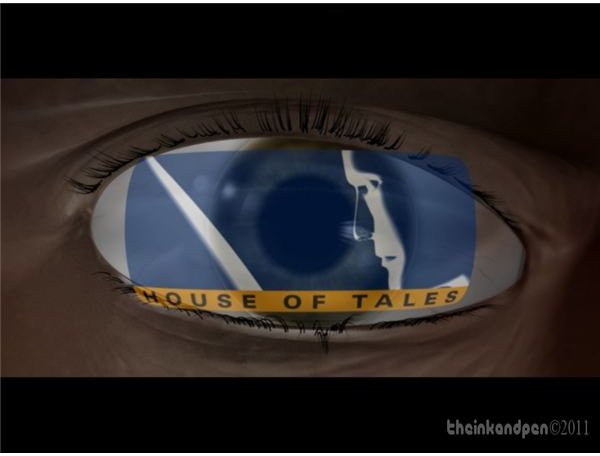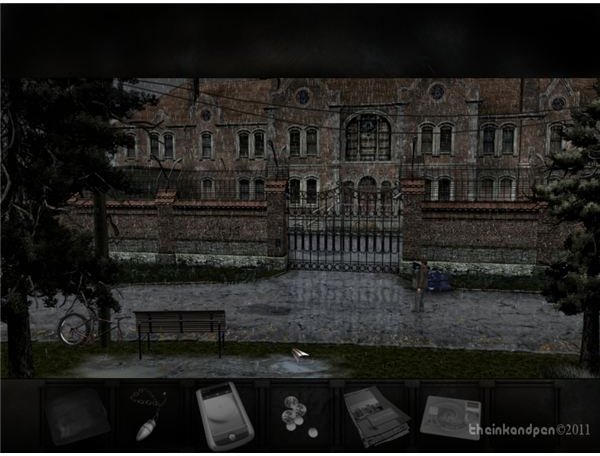Interactive Fiction Review of 'Overclocked: A history of Violence'

House of Who?
The ‘House of Tales’ name isn’t particularly well-known amongst adventure-gaming enthusiasts, or at least not as notable as giants such as ‘Microids’ or the epic ‘Lucasarts’ (originally ‘Lucasfilm games’.) Created and ran by Tobias Schachte and Martin Ganteföhr, the company first introduced itself to the Interactive Fiction public with ‘Mystery of the Druids’, evoking some of the eerie atmosphere of ‘Gabriel Knight’ with a mix of Sherlock Holmes’s ‘Serrated scalpel’. Subsequently came ‘A moment of silence’; an immediate future with a bleak, unhopeful outlook, coupled by a cyber-punk atmosphere reminiscent of old classics like ‘Beneath a Steel sky’.
Whilst Tobias Schachte concentrates strictly on the programming aspect Martin Ganteföhr, being a literature graduate, is the driving force behind the games’ narrative aspect. The team have proved effective in providing games which have a solid and inventive storyline, often tackling the most sombre aspects of the adventure genre resulting in a great gameplay experience. After some success with ‘Moment of silence’ their latest effort indicates they are always striving for better, not just aesthetically.
The Story (4 out of 5)

In this point-and-clicker you play David McNamara, a forensic psychiatrist assigned to a New York mental health hospital to interrogate five youngsters who were recently committed. The patients were all discovered in separate areas of the city, clothes blood-stained and weapons in hand, having committed seemingly unrelated murders. Not the ideal scenario for a shrink with an already troubled past, going through marital problems and still emotionally scarred by his previous military experience. Needless to say our hero seeks comfort in a drink or two at times; add a looney-bin, constantly grim weather and personal issues and even a priest would get plastered.
The overall ambience is conveyed quite well, with the incessant rain digging into the cemented New Yorker monotony, the incredibly detailed backgrounds and Dynamedion’s soundtrack which keeps you on your toes. The animated characters aren’t flawless and they’ve had their share of criticism: I didn’t find it particularly distracting with such engrossing story and gameplay.
The Gameplay (4 out of 5)

As with their previous game, HoT have kept the interface very simple. The cursor switches to the appropriate action depending on where you point, i.e. a click on a door would automatically open it, and it is easy to initiate conversations. The inventory is easy to manage; you can combine items in the usual way, by dropping one item onto another, and you can scroll through your trinkets and contraptions via an arrow either sides of the screen.
One particular aspect makes this title distinct, being the ablility to control different characters at various parts of the game. This was explored somewhat in ‘Omikron: The Nomad Soul’ and earlier in the ‘switch’ function of ‘Zak McKracken’. As you gradually try and gain insight into the patient’s memory you suddenly have a split-screen sequence and are transported into the moment the patient is recalling, in the best Hollywood traditions. You are now playing in that location and are in control of the patient’s inventory. The game won an innovation-award in Germany mainly due to its multi-threaded narrative.
Since this is Interactive fiction, the only element which helps you advance is solving puzzles. Although there is plenty of content to keep players occupied, such as cut-scenes or landscape, there is little challenge. This was the main let-down, resulting in shorter game compared to the company’s previous effort.
The Verdict (5 out of 5)
Along with ‘Indigo Prophecies’ and other unique titles, ‘Overclocked’ is definitely something you must own if you are into the genre. Although it does have its faults, it’s to be played for the gripping atmosphere, stunning cinematics and well-written, balanced narrative; raising questions about the morality of violence in Darwinian undertones and evoking some of Vollmans work. In those areas it truly shines and makes adventure fans hopeful for what’s to come next.
Oh, and by the way, once inside the asylum, please look through the port-holes before entering a door.
